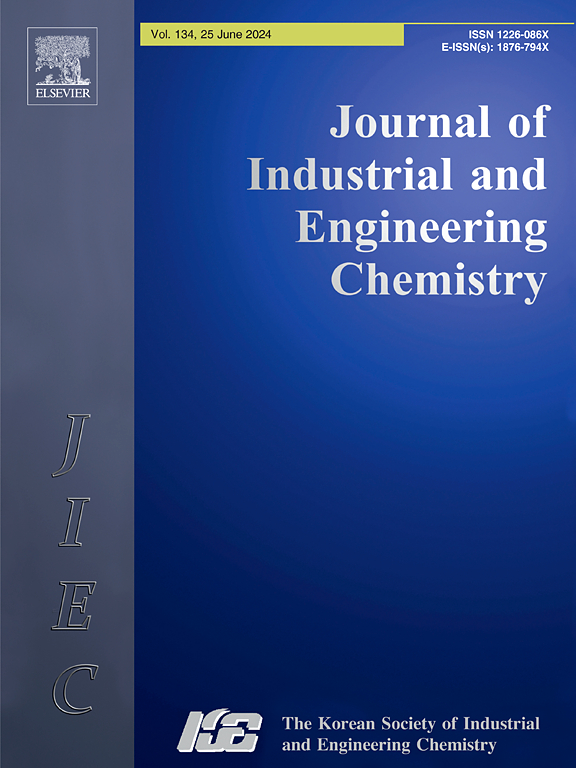Kinetic modelling of ozonation and photolytic ozonation of metronidazole removal from water
IF 5.9
3区 工程技术
Q1 CHEMISTRY, MULTIDISCIPLINARY
Journal of Industrial and Engineering Chemistry
Pub Date : 2024-10-09
DOI:10.1016/j.jiec.2024.10.010
引用次数: 0
Abstract
This work addresses the ozonation, photolysis, and photolytic ozonation of metronidazole (MTZ), a widely used antibiotic frequently detected in urban wastewater. A UVA source emitting radiation between 300 and 400 nm was utilized. The presence of scavengers such as t-butanol and sodium azide confirmed the role of hydroxyl radicals in both ozonation and photolysis processes. Conversely, singlet oxygen did not influence the photolytic processes. The average quantum yields of MTZ and ozone were determined to be 1.2 × 10−3 and 0.72 mol/Einstein, respectively, for the 300–400 nm wavelength range. In direct MTZ photolysis, a stoichiometric ratio of 0.34 mol of hydroxyl radicals formed per mol of photolyzed MTZ was observed. However, the effects of hydroxyl radicals on the MTZ photolytic rate were only significant after 45 min of reaction time. Using rate constant data from literature and quantum yields calculated in this study, a kinetic model for both MTZ ozonation and photolytic ozonation was proposed, enabling the prediction of MTZ conversion and degradation rates. This model includes three intermediate compounds that also consume ozone and hydroxyl radicals. The results show that experimental and calculated concentrations of MTZ are within an error margin of less than 14 % in all cases.

求助全文
约1分钟内获得全文
求助全文
来源期刊
CiteScore
10.40
自引率
6.60%
发文量
639
审稿时长
29 days
期刊介绍:
Journal of Industrial and Engineering Chemistry is published monthly in English by the Korean Society of Industrial and Engineering Chemistry. JIEC brings together multidisciplinary interests in one journal and is to disseminate information on all aspects of research and development in industrial and engineering chemistry. Contributions in the form of research articles, short communications, notes and reviews are considered for publication. The editors welcome original contributions that have not been and are not to be published elsewhere. Instruction to authors and a manuscript submissions form are printed at the end of each issue. Bulk reprints of individual articles can be ordered. This publication is partially supported by Korea Research Foundation and the Korean Federation of Science and Technology Societies.

 求助内容:
求助内容: 应助结果提醒方式:
应助结果提醒方式:


